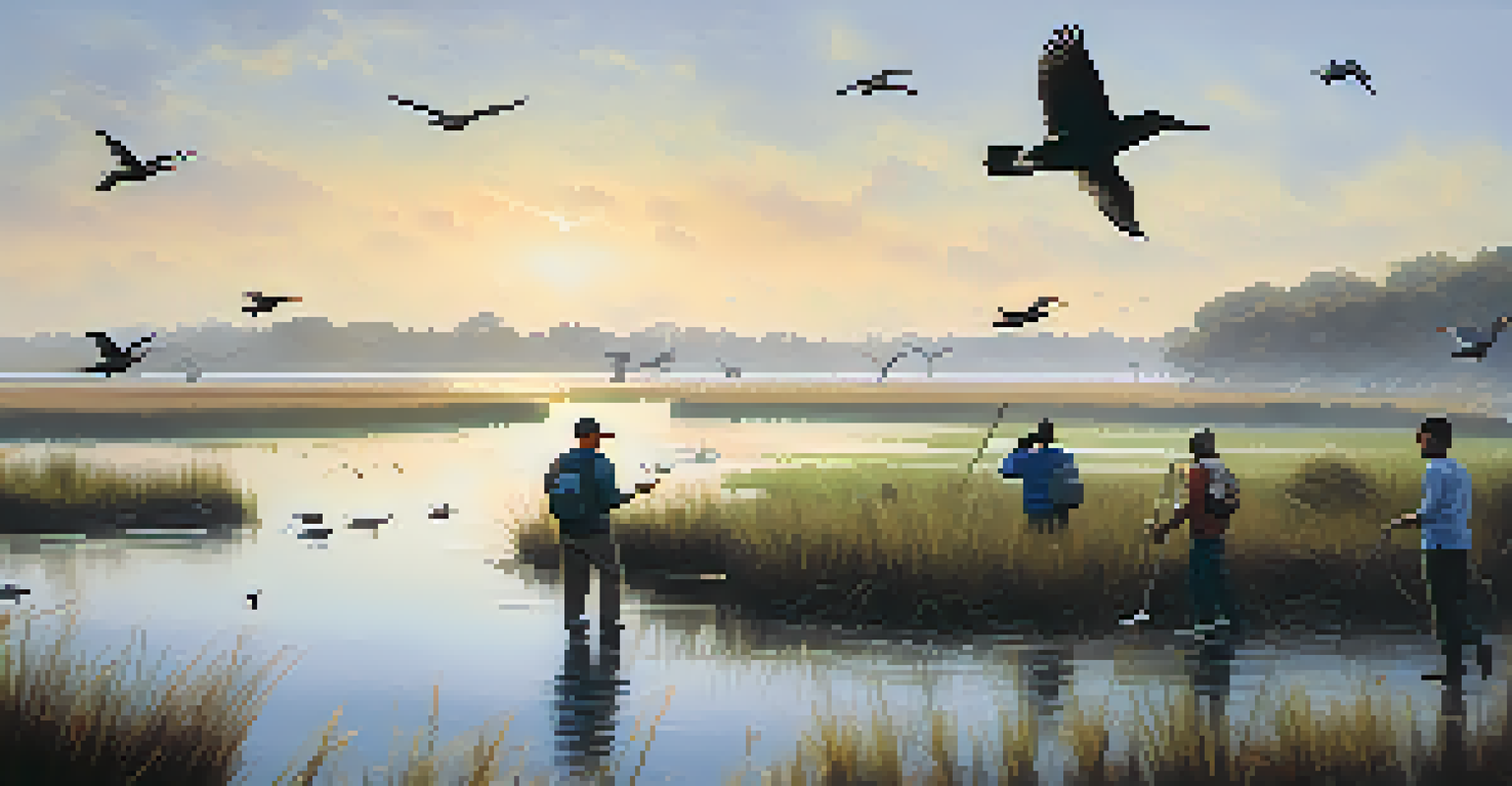The Unique Flora and Fauna of California's Coastal Regions

Introduction to California's Coastal Diversity
California's coastal regions stretch over 800 miles, showcasing a remarkable diversity of ecosystems. From sandy beaches to rugged cliffs, each habitat supports a unique array of flora and fauna. This rich biodiversity is not only beautiful but also crucial for maintaining ecological balance.
The coast is a place where nature's beauty is not just seen, but felt deep within the soul.
The state's varied climate, ranging from Mediterranean to temperate rainforest, fosters a wide range of plant and animal species. These ecosystems are home to thousands of species, many of which are endemic, meaning they are found nowhere else on Earth. This uniqueness makes California's coast a vital area for conservation efforts.
As we explore the unique flora and fauna of California's coastal regions, we'll uncover the intricate relationships between these organisms and their habitats. Understanding these connections is essential for appreciating the natural beauty and ecological significance of this area.
Coastal Plants: Adapting to Harsh Conditions
The coastal regions of California are home to a variety of resilient plant species that have adapted to salty air and sandy soils. Coastal sage scrub, for example, is a common habitat characterized by drought-resistant shrubs and wildflowers that bloom vibrantly in spring. These plants not only withstand the challenging environment but also provide essential shelter and food for local wildlife.

Kelp forests are another fascinating aspect of coastal plant life. These underwater forests are formed by giant kelp, which can grow up to two feet per day. Kelp forests support a plethora of marine life, serving as both a habitat and a food source for species like sea otters and various fish.
Cultural and Ecological Importance
Coastal ecosystems hold significant cultural value, reflecting the deep connections of indigenous peoples and inspiring art and community traditions.
In addition to kelp, the coastal regions also boast iconic plants such as the coastal redwood and the manzanita. These species demonstrate how life can thrive in diverse environments, showcasing the adaptability and resilience of California's flora.
Unique Animal Species Found Along the Coast
California's coastal regions are teeming with unique animal species that have adapted to their environments. One notable example is the California sea lion, often seen basking on coastal rocks or playing in the surf. These playful creatures are not only a delight to observe but also play a critical role in the marine ecosystem.
In every walk with nature, one receives far more than he seeks.
Another remarkable resident of California's coast is the snowy plover, a small shorebird that nests on sandy beaches. This bird is an excellent example of a species that has adapted to its environment, using its camouflage to protect itself and its eggs from predators. Conservation efforts have been crucial in helping to protect snowy plover populations, which are threatened by habitat loss.
Moreover, the coastal regions host a variety of marine mammals, including gray whales and dolphins. These animals not only captivate visitors but also highlight the importance of maintaining healthy ocean ecosystems for their survival.
Endangered Species and Conservation Efforts
Many unique species in California's coastal regions are facing threats due to habitat loss, pollution, and climate change. The California condor, once on the brink of extinction, is a prime example of a species that has benefited from intensive conservation efforts. Today, thanks to dedicated initiatives, their numbers are slowly recovering.
In addition to the condor, other endangered species like the California least tern and the northern elephant seal are receiving attention from conservationists. Protecting their habitats and implementing breeding programs are critical steps in ensuring their survival.
Biodiversity of California's Coast
California's coastal regions boast a rich diversity of ecosystems, supporting unique flora and fauna crucial for ecological balance.
Community involvement is also essential for conservation. Local organizations and volunteers play a significant role in habitat restoration, beach clean-ups, and public education about the importance of preserving these unique ecosystems.
The Role of Coastal Wetlands in Biodiversity
Coastal wetlands, such as marshes and estuaries, are vital ecosystems that support a rich diversity of life. These areas act as nurseries for many fish species, providing a safe haven for young marine animals to grow before venturing into the open ocean. The intricate web of life in these wetlands underscores their importance in maintaining overall biodiversity.
Wetlands also serve as crucial habitats for migratory birds, offering food and shelter during their long journeys. The San Francisco Bay Area, for example, is a critical stopover point for thousands of migratory birds each year, showcasing the global significance of these local ecosystems.
Despite their importance, coastal wetlands are often threatened by development and pollution. Protecting these areas is essential not only for the wildlife that depends on them but also for the health of the entire coastal ecosystem.
Marine Protected Areas: Safeguarding Biodiversity
California has taken significant steps to protect its coastal biodiversity through the establishment of Marine Protected Areas (MPAs). These designated zones restrict certain activities, like fishing and development, to help conserve marine life and habitats. MPAs are essential for allowing ecosystems to recover and thrive, providing a refuge for endangered species.
The success of MPAs can be seen in the recovery of fish populations and the resurgence of kelp forests in some areas. By creating safe havens for marine life, these protected areas support healthier ecosystems and promote resilience against environmental changes.
Conservation of Endangered Species
Intensive conservation efforts are vital for protecting endangered species like the California condor and ensuring their survival.
Public awareness and support are crucial for the effectiveness of MPAs. Engaging local communities in conservation efforts helps foster a sense of stewardship, ensuring that these vital areas are preserved for generations to come.
The Cultural Significance of Coastal Ecosystems
California's coastal regions are not only ecologically significant but also culturally rich. Indigenous peoples have lived in harmony with these ecosystems for thousands of years, relying on the land and sea for sustenance and cultural practices. Their deep understanding of the environment continues to offer valuable insights into sustainable living.
Many coastal communities celebrate their connection to the ocean through festivals and events that honor local traditions and marine life. These celebrations help raise awareness about the importance of preserving coastal ecosystems and inspire future generations to appreciate and protect their natural heritage.

Furthermore, the beauty of California's coast has inspired countless artists, writers, and musicians. This cultural connection to the landscape emphasizes the importance of preserving these ecosystems, not just for their ecological value but also for their role in shaping California's identity.